H&M is the Donald Trump of Recycle Week

I see it like this. H&M (and their clothing collecting campaign) is like a wealthy neighbor I invite over to my house for a barbecue. I´m thrilled, since he is a well known chef. So I say nothing when he suggests we do the barbecue indoors. He must know what he is doing, a new thing, I think to myself. Well, the house burns down and he is paraded in the evening news for saving me and my family from the fire (when it was actually my dog that saved us). Celebs always get more news coverage than dogs. Everyone thinks he is a superb guy now, and oh yeah, my insurance company refuse to pay for the damages, because setting up a barbecue indoors is just ridiculous and totally against my insurance policy. But I knew that, so who´s to blame? He´s still a pretty capable chef, most of the time. And everyone loves a barbecue.
This week H&M launched a huge campaign for their clothing collection initiative. This is the first time they took up a global advertising campaign to promote it, even though the collection campaign itself started in H&M stores in 2013, when they partnered up with I:CO (Soex Group), the German clothing collection and sorting company. Normally I´m thrilled about pretty much anything related to clothes collecting and recycling. I think ALL fashion retailers should do it, because it is their responsibility to manage and discard the clothes they produce in an environmentally friendly way since it was their company that produced all the stuff in the first place. Just like in electronics. In a way I think H&M and all the other retailers I:CO is working with are good examples on how it should be done and more fashion brands and retailers should do the same.
And just to be clear, not everything H&M or I:CO does is wrong with their clothes collection. But there are definitely some things I would do differently. Read the article through to find out who I think are The Good, The Bad and The Ugly of Recycle Week.
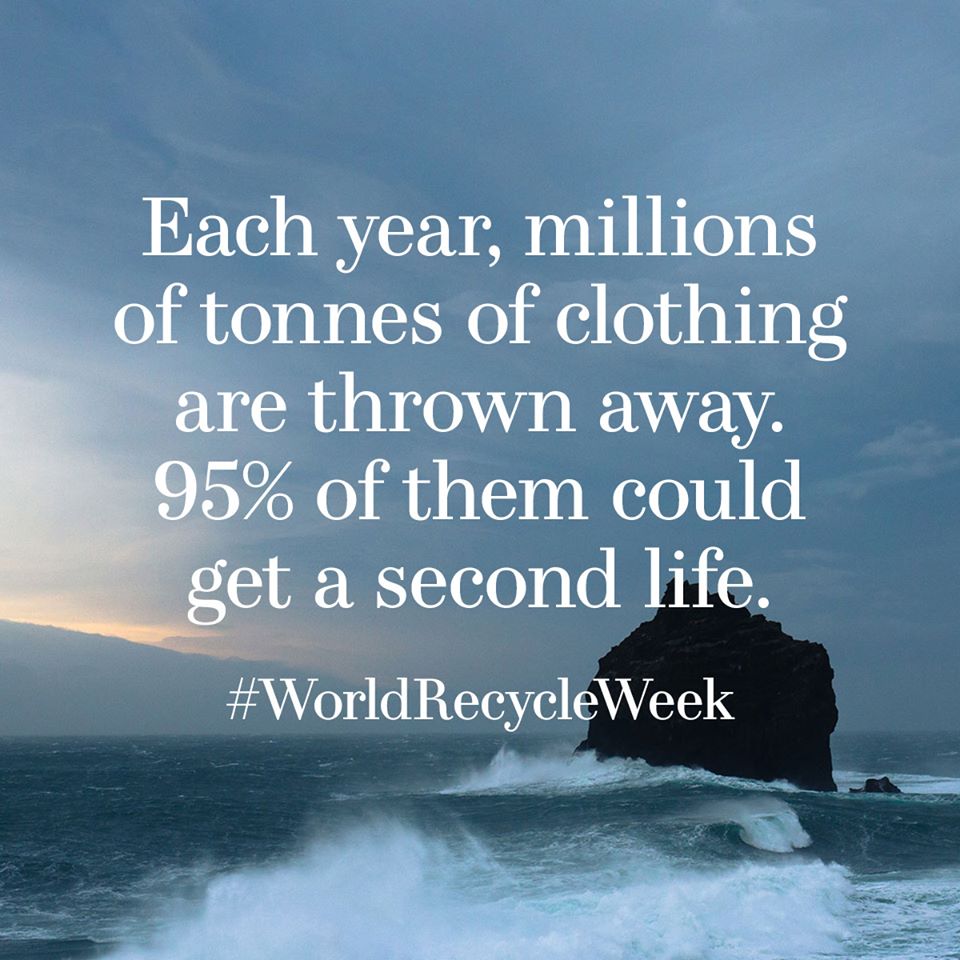
SO WHY I WROTE THIS ARTICLE? AND WHY IS IT SO LONG?
Collecting and recycling clothes is a complex business. I´m writing this article in hopes of raising the issues that I see misleading and false in this clothing collecting campaign. Marketing people love to tell you only the positive stuff and steer the consumers focus away from the negative. If this is done intentionally to make the product, service or brand seen more ecological or ethical to the consumer, it is greenwashing.
Although I´m pretty sure marketing people would just say, that not so many people would´t get onboard with the campaign if they were 100% honest. Really? Are we the consumers that stupid or just so simple, that a little reality spooks us? I think not. They are just afraid we´d call their bluff and take our money to someone else. But isn´t that just the greatest incentive for a company in creating a better product or service? I personally love brands, who think of everything, so I don´t have to. Take my money already!
The average Consumer Jane is not an expert in textile recycling, nor should they be. I, on the other hand, have worked with it for three years now and have read countless reports to get a better understanding on how it works and how it should be done. I´m not an engineer, but a concerned citizen and a textile recycling professional with a passion for sustainable fashion. I´m hoping my insight gives you some perspective to you so you can make up your own mind where and how to spend your money and who to support. Which ever fits your own value base, as long as it is a conscious choice on your part.
This article focuses on the H&M clothes collection campaign itself and its communication methods. Not to the other sustainability efforts H&M is doing, like its Conscious Collection 2016. I for one loved H&M Conscious this season. It was just as it should be, but so far it is the only thing I personally could shop at H&M. I also loved the fact that they separated pre consumer waste and post consumer waste in their product labeling. Still most of the things they produce are too much in quantity and unsustainable.
It is also notable, that many other retailers, like Zara (Inditex) for example, is not doing anything similar, even though they are about the same size in production scale as H&M. But Zara is not claiming to be sustainable in their marketing. Customers know that when they shop at Zara, it is definitely not a conscious choice. There is a difference and it applies to most fashion brands.
Still most of the things H&M produce are too much in quantity and unsustainable.

The first thing that really set me off, was that H&M is launching this campaign on the same week as Fashion Revolution, which is focused on raising consumer awareness in textile industry ethics. Fashion Revolution was founded after the textile factory collapsed in Rana Plaza Bangladesh in 2013 and over 1100 people lost their lives and 2500 people were injured. Why did it matter? It is considered the deadliest garment-factory accident in history, as well as the deadliest accidental structural failure in modern human history. H&M on the other hand is the world’s largest producer of garments in Bangladesh. Having a fast fashion company promoting recycling on the same week as we should be remembering this tragedy and asking fashion brands #whomademyclothes, was just ignorant and arrogant. Fashion Revolution released a statement, where they rightfully challenged the H&M campaign communication and methods. H&M responded and they agreed not to have these campaigns on the same week again.
But the collision of these campaigns got the attention of many journalists (list in the end of post). Also fashion publications, that I have never seen openly criticize H&M´s methods and communication, were doing pieces on how contradictory the campaign itself is. If a brand is advertising itself as sustainable, it means also their advertising, marketing and communicating with the consumer needs to be honest and transparent. That is what sustainable business is.
I have written about H&M/I:CO partnership before in 2014, but I felt in the light of the current campaign, I have to do it again and update the info. Today, I´m calling H&M´s clothes collecting and recycle campaign the Donald Trump of Recycle Week. They are using a massive celebrity fueled loud musical number of a campaign in stressing issues that are just a tiny percentage in the big picture. But it sounds good and its a big show. Who cares about facts and relativity. And by doing so they also fool hundreds of thousands, even millions of consumers in thinking they are doing much more then they say. And because consumers think H&M is doing good, so they are allowed to buy more because of that. It´s all psychological.
ABOUT TEXTILE RECYCLING TERMINOLOGY
When talking about clothes recycling, it is important to get the terminology right and to understand that there is money flowing behind the green colored ads. H&M does not exactly recycle anything, they just offer the place to COLLECT the clothes. I:CO (Soex Group) sorts the clothes and mashes a part of it into recyclable fibre pulp, but they do not reproduce them into a finished and resealable new recycle product. All this reproduction part is done by other companies and partners for I:CO. So, to keep things clear H&M should just be talking about collecting and I:CO sorting. Not recycling, so that the consumer does not think they do more then they actually are. Though both are a part of the process.
As a consumer, you should be familiar with these terms, so you know to ask for more information, if it is not presented. And that you are able to browse through ads and marketing efforts without being tricked into thinking something is better than it actually is. Its like comparing the food shopping for a vegetarian and vegan, they have a different value base, so the other one asks for much more detailed information when buying food or products, the other just checks if there is meat/fish in there somewhere but does not read the fine print.
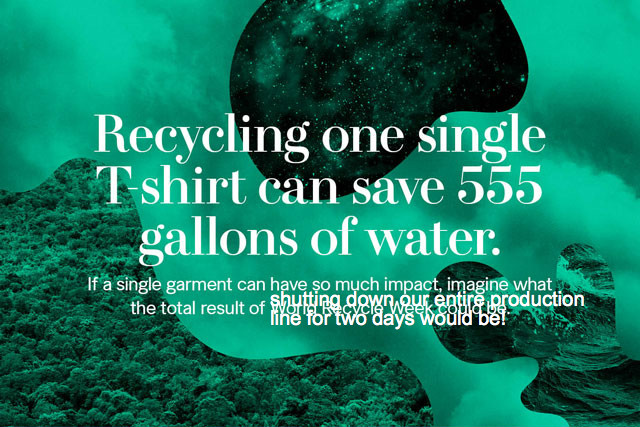
WHAT IS SUSTAINABLE MARKETING?
As Lucy Siegle (one of my favorite eco fashion journalists) pointed out in Business Of Fashion, “Most brands have concentrated on the most easily achievable and easily marketable issues: detoxifying the cotton supply, using non-toxic dyes, or recycling unwanted clothes. This sort of stuff was perhaps impressive 10 years ago, but post-Rana Plaza, adds up to little more than giving the rag trade a light dusting. What’s needed is a courageous re-imagining of a flawed business model and supply chain.”
H&M knows recycling fashion is a tricky business and far from simple. Yet the campaign slogans are catchy on make it sound so easy. I think it´s about time consumers knew the complexity of recycling clothes and fibers, so at least they would not buy to recycle. Its more important to consume more responsibly and try to do everything possible to prevent your clothes from becoming waste in the first place.
Sustainable business means also 100% transparent marketing and communicating with the consumer.
Lucy continues in BOF, “Some fashion brands get this, like Honest by, which tells consumers exactly how much it costs to sew on each button; Nudie jeans, which pays factory workers a living wage (they also use organic cotton in ALL their denims and repair them in-store); or Patagonia, whose latest Worn Wear Tour lets customers bring broken apparel, irrespective of brand, to its mending vans, decoupling the apparel industry from disposability in an authentic way.” These are sustainable efforts.
WHAT IS PRODUCER RESPONSABILITY?
You know when you buy electronics (TV´s, mobile phones, hairdryer, light bulbs..), and after a while the don´t work anymore. You know you just can´t throw them out, because they contain metals and batteries, that are toxic and prohibited in landfills. You have to make an effort to recycling the properly, as you can return them to any electronics store and they are obligated in recycling them responsibly.
Well, clothes, accessories and other textiles are much like electronics from the recycling point of view as they contain many different hard-to-take-apart-elements and therefore there is no one recycling opinion for them. But clothes are not a part of this legislation. There is no official law that states to the textile producers and brands, that they are responsible for recycling and re-using the waste they help to create. In this sense H&M and I:CO are doing more than they are required. But since H&M is raising its production each year, I see them doing their part a must have (since they are a big part of the problem) and not a nice to have. No matter what the law says.
But a brand can only offer to collect and dispose the waste. It is still the consumers responsibility (after purchase) to make the choice and action to sort their waste and take them to the right bin for further processing. But as I said before, the consumer is not the expert. I see that fashion brands and clothing collecting organizations need to do much more educational material, videos and what not to tell the consumer which bin to use.
I see that fashion brands and clothing collecting organizations need to do much more educational material, videos and what not to tell the consumer which bin to use.
Finland has 58 H&M stores. It is quite a lot when we compare it to the amount of people living in Finland, which is 5,5 million in total. In regards to the clothes collecting, it means points of action in smaller cities that might not have other clothes collecting organizations present. So it depends a lot where in Finland you live, and if you have a local and more responsible collector nearby. Unfortunately it is the consumers problem to find out the best place available. If you live in Helsinki, or other major city, you have a choice of where to donate or recycle your textiles.
And lets not forget pre consumer waste, when talkin about producer responsibility. That part never gets in the hands of the consumer, so it is completely on the brands to manage. I wrote a post on that as well. Might want to check that out since it is a large chunk of the waste cake.
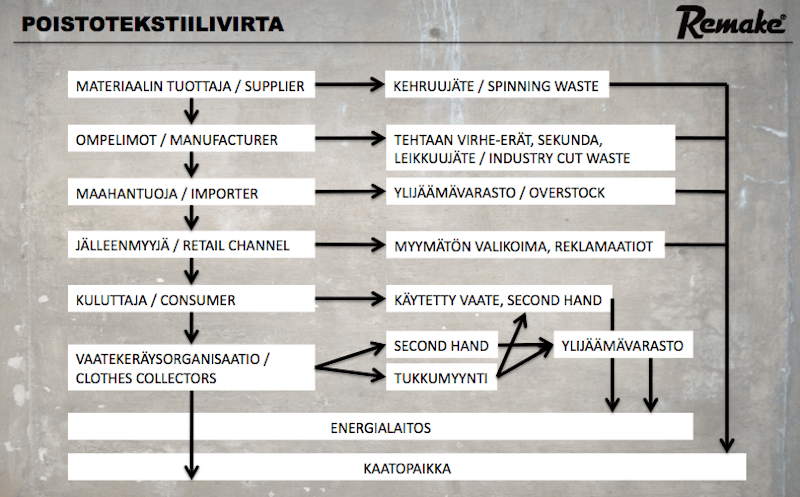
Textile waste types, both pre and post consumer waste. In EU the waste is not taken to a landfill, but outside EU this is possible. There are ways to recycle also pre consumer waste, but it is not shown in this chart.
REDUCING PRODUCTION VS. PUSHING INNOVATION?
To support innovation in the field of textiles recycling, H&M launched an innovation competition last year. They rewarded Finnish Aalto University project called ioncell-f which is a brilliant project. Notably H&M is interested in this because when and if it is launched, it will be a major breakthrough in textile recycling and solve many of H&M´s current recycling challenges. Read more about it here. This tech project is still being developed and cannot be considered as an alternative yet.
In this interview with Henrik Lampa, H&M’s Development Sustainability Manager, he is well aware of the challenges that recycling fashion (fibre or clothes) has. But he still says,”It’s not the industry, it’s the society. It’s not about minimizing, minimizing, minimizing, almost wishing you weren’t born, it’s about looking for how can you design the system so you are maximizing the positive effects, and do away with the unsustainable negative.”
In the interview its very clear that H&M sees that the only option for them pushing for innovation and campaigning, and NOT reducing production which I think is just outrageous. Sure, look up technical innovation, but it will take time to find it. Meanwhile, if the brand parades itself on the green agenda, lowering your production is the only action that has an instant effect. Because the plan B is not finished yet. But this doesn’t seem to matter to them. Instead, they are intent on moving forward, opening new stores, making more cheap clothes at a rate of +15% each year, a couple of Conscious Collections here and hope their research team solves the problem of recycling as they go along. The biggest problem is their unsustainable business model, and they are doing nothing about it.
TEEB: None of the world’s top industries would be profitable if they paid for the natural capital they use.
Check out a recent report done by Trucost and The Economics of Ecosystems and Biodiversity (TEEB). Trucost provides data and insight to help its clients understand the economic consequences of natural capital dependency. TEEB is a global initiative focused on “making nature’s values visible”. In this report they rounded up the total unpriced natural capital consumed by the world’s top industrial sectors. Natural capital refers to ecological materials and services like, clean water or a stable atmosphere. Unpriced means that businesses or their consumers don’t pay to consume them. The report concluded that no current business would be profitable if environmental costs were fully integrated in to their cost structure.
So ponder that for a moment. None of the world’s top industrial sectors would be profitable if they were paying their full freight… None. When it comes to natural resource free riders like H&M, this is crucial. The report states that the majority of unpriced natural capital costs are from greenhouse gas emissions 38% followed by water use 25%, land use 24%, air pollution 7%, land and water pollution 5% and waste 1%. When you compare this to the clothes collecting campaign, it would make sense to pay very close attention to the logistics part of the campaign, as emissions are a major issue. This is why, I´m always looking out for ways to interact with local businesses with local suppliers and channels. It makes a huge difference.
H&M knows this, but it is clear they are not interested in finding sustainable alternatives, because it is the right thing to do. They do it because they know that in a few years the price of cotton, water and other resources becomes too much for them. And when this happens, they need to have a plan B so it does not effect their business. But for now, they make money and business as usual.
If H&M was truly serious about sustainability, then it would focus on changing its business model.
At the moment H&M manufactures at least 600 million items each year and operates in 3,900 stores in 61 countries. H&M, is second only to Inditex, owner of Zara, as the world’s largest clothing retailer in the world in sales volume and production. Now it is opening store number 4,000 this year in New Delhi. To manufacture and ship the clothes that fill those stores requires a staggering amount of resources, from energy-hungry cotton to electricity, oil, and water. And more cheap labor to produce it all.
And the expansion is far from over. “I think we will go to 7,000, 8,000 stores plus and beyond,” CEO Karl-Johan Persson told Bloomberg. Yeah, to me that sounds like more cheap clothes, more valuable natural resources used and sure, more second hand donations. That doubling in size will take somewhere from four to eight years. It also will take H&M’s already massive environmental impact to new heights, at a time when the company is trying hard to reduce its footprint and control the waste that fast-fashion generates. It wants to reduce its environmental footprint while doubling its store footprint.
So maybe now you understand a bit why I see the developing and lowering production such an important thing. H&M should focus completely on changing their business model and closing the loop with out growth. But if they expand their business dramatically at the same time, yet still massively claiming to be sustainable, it just does not add up. Even if H&M manages to mitigate its environmental footprint slightly from one year to the next, its business continues to grow, and that footprint remains enormous—and far from sustainable.
COMMUNICATING THE BIG PICTURE TO CONSUMERS
Greenpeace also criticized the H&M recycling campaign. “H&M’s Recycling Week is in reality a week of illusions since only one percent of collected clothing can be used as recycled fibers,” Kirsten Brodde, the project lead of Greenpeace Detox My Fashion, wrote in a press release. “But this is not told to the customers.” She suggests that offering garment repair services would have done more good than inviting customers to recycle their old clothes and buy new ones.
Also we need to understand that when ever talking about textiles, the list of companies involved is very long, even at the end of the life-cycle of a garment. When a business claims to be sustainable, like H&M and I:CO do, this long list of partners and working methods needs to be on their website and accessible to anyone. At the moment both only show overall closed loop diagrams and overall mood videos, but not exact numbers or detailed information on how the collecting is done and what happens to the collected clothes and who its being sold (not donated!) to. At the moment one has to dig up the information from Sustainability reports, factory visit reports and other sources. And not everything is even shown there.
I for one would love to know the country by country details on clothes collecting campaigns. Who donated what, where, and what exactly happened to that mass. In both kilos and percentages. Hopefully we´ll see this in next years Sustainability report, and not just global numbers.
It is also notable, that at the moment H&M is doing the clothes collecting in only their H&M stores. The whole H&M Group and its brands are H&M, COS, Monki, Weekday, Cheap Monday, Other Stories combined.
Why are they not doing the clothes collecting in all H&M Group brand stores?
The following video H&M released to open up their Recycle Week agenda is pretty, but quite far from the truth. It is completely missing out on about 50% of what happens to the clothes, but hey, at least the got it 50% truthful. The missing 50% is shipping the clothes condemned as “moderate wearability” to other countries and the developing world. In 2015, recycled fabric did rise to 1% of the materials H&M used, up from 0.2% last year (Hey, 500% increase!), according to its newest sustainability report. This 1% figure is not mentioned anywhere, because percentages are usually used in marketing when it makes something sound good.
WHAT DOES 1000 TONS COLLECTED CLOTHES MEAN?
As Lucy Siegle pointed out in her The Guardian article, if 1,000 tons is collected, that roughly equates to the same amount of clothes a brand of this size pumps out into the world in 48 hours. So if they would stop production for just two days, they would actually save much more natural resources and energy, than doing clothes collecting. This is why EU has clearly stated that preventing waste in any way possible is the first priority. “Reduce, reuse, recycle” 1, 2, 3. In that order.

EU waste management hierarchy in circular economy.
To make sure the clothes last in use, H&M can add only 20% of cotton post consumer waste fibers into clothes, meaning that 80% are virgin cotton fibers in the clothes they sell as “recycled”. Polyester can be recycled 100%. In 2015 H&M collected over 12 million kilos (25 million pieces of clothes..?) of garments according to their Sustainability report. From those collected, they used the fibre to make 1,3 million pieces of clothes with recycled fibers in them. So at the moment about 1% of the collected clothes gets recycled into new clothes. The rest goes somewhere else. I think this is not highlighted enough in the campaign marketing. At the moment these numbers are the reality in general clothes collecting and recycling, but it is important to be transparent about these fine numbers, so the consumers does not think that old clothes can be recycled, spun and weaved into new clothes just like that.
To give more perspective to the total H&M GLOBAL clothes collection amount, which is 1000 tonnes or 1 million kilos (within one week). In Finland alone, private consumers discard a total of 54 million kilos of clothes each year (population 5,5 million people). Previously to landfills, but from this year on, through energy incineration facilities. Clothes collecting organizations like UFF collect 12 million kilos and Fida 1,5 million kilos each year.
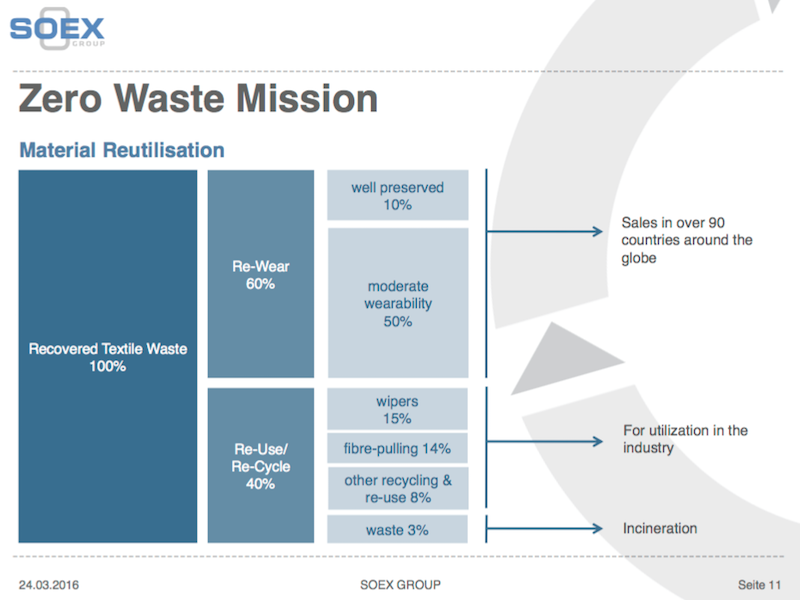
I-CO Soex Group material flow.
WHAT HAPPENS TO THE COLLECTED CLOTHES, I:CO (SOEX GROUP)
Fashion Revolution pointed out in their claim to H&M the misleading language used to describe the impact of their recycling initiative. “We were thrilled that so many people showed their support for greater transparency and helped start a conversation around the controversial issues surrounding the export of second hand clothing in developing countries.” said Orsola de Castro, co-founder of Fashion Revolution.
She is right. We should´t be shipping our unwanteds to Africa or anywhere else. They should be attended to within EU as they are OUR waste. Our taxpayers should pay for their disposal. At this point I am concerned to where I:CO is shipping of 50% of the mass (called moderate wearability). Especially if they are going to developing countries. This information is completely missing from their website. I:CO has sorted the textile mass out (some organizations just ship without sorting), so that is a small plus. But still, they should have a list of countries and subcontractor companies were the 50% of the collected clothes are sold. Regards to the H&M re-looping video (shown above), to what happens to the clothes, this part is also completely missing from it. H&M did not seem to think it was important, I suppose.
This business partnership between H&M and I:CO is still business, even if it is about recycling and used clothes. It is a second hand fast fashion business for a profit. It is not a charity or organization run endeavor in any way. Most consumers have gotten used to second hand clothes being somehow related to charities and the value base behind the organization doing it.
On a plus side, I do have to give it to I:CO for being efficient in sorting clothes. Sorting and recycling textiles is a professional job. One has to be familiar with the entire process of fibre recycling, second hand and tens of different fibers to be able to determine in seconds, where the garment should go. Sorting centre staff has about 10 seconds to do this per item. Work should be done fast and efficiently to keep it profitable. I think consumers often don´t realize how hard it is to recycle textiles. They have to be sorted 100% by man, because there is no machine to do the job.
And people need to get paid to do this job. I would advice companies like I:CO and similar organizations that are working with donated textile mass, to open up their cost structure, so that the consumer would see what amount of the sold money actually stays with the company as revenue, and what is tax, salaries and logistics costs, ect. Maybe this way the consumer would understand, that they should actually be happy, that H&M, I:CO, Fida or UFF and other clothing collectors are not charging them for handling your waste.
These people who handle your unwanted, unused clothes, actually get paid many times more than the people who made the clothes…
Following the conversation and commenting online it surprises me on how little the custumers of H&M are asking where these collected clothes are going, by who and what happens to them. When I have worked at charity run second hand stores, people ask these things from us all the time. How can they be more interested in what a charity organization does, when everything they do has to be transparent? Why are these questions not asked from a major company and their partners? I just don´t understand it.
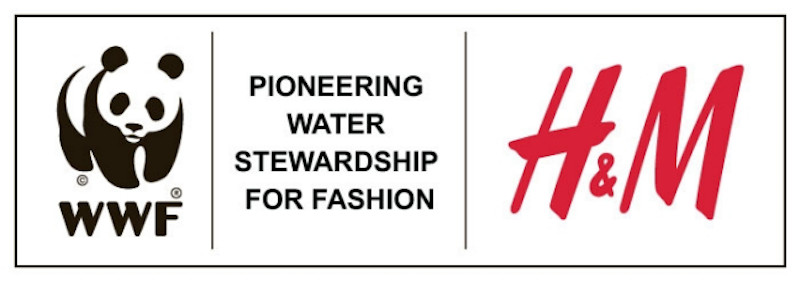
H&M CLOTHES COLLECTING VS. CHARITY
The H&M clothes collecting campaign has local charity organizations as partners and H&M donates 0,02€ to that charity for every kilo they collect. If H&M reaches their goal of 1 million kilos, the global donation grand total would be 20 000€. Doesn´t sound much globally, huh? In Finland, this charity is WWF. I cannot believe that WWF has gone along to market and advertise this collecting campaign. What on earth are they doing advertising one of the companies that is the reason wildlife is in trouble, is beyond me. I´m hoping the co-op people from WWF read this article, and carefully consider their future projects. WWF has actually been a partner for H&M since 2013, when they started their water project, which I think is fine. H&M need help and consultation from a environmental organization to get better. But WWF, H&M and clothes collecting.. Uh..No.
But what about you? Consumers should never fall for a fast fashion product buying (remember the vouchers!) campaign just because a small percentage of the proceeds go to charity. Donated ten kilos? Congratulations, your donation was 0,20€ and you just gave 5 kilos of textiles to a company who might be shipping them to Africa. This is why personally I always support the charity directly. In this campaign I wished, that the H&M clothes collecting points would just have had also money collection boxes in addition to the clothes bins, so you could have had the option to drop a 2€ coin there (goes to WWF in full) and made your charity donation just ten times bigger. I´m sure, many of you would have done just that.
SAVE THE CLOTHES FROM “ENDING UP AT LANDFILLS” AND 95%.
H&M’s own comments call into question exactly what it means when it says at the end of the M.I.A. video that “95% of textiles thrown away worldwide could get a second life”—followed by the suggestion to bring those clothes to an H&M store.
One slogan that H&M used a lot in their campaign, is “It is estimated that up to 95% of the textiles could be recycled”. I think it is super important for campaigns to mention their sources. I searched for the source for two days and the only mention I could find was from here. In this case the percentage refers to a study done in the mid 90´s (Recycling Association 1995). The whole fashion industry has changed drastically since and if there are no newer studies done on the matter in recent years, using this percentage as a campaign slogan is highly questionable. Please let me know if you know a newer source for this.
If on the other hand, if the 95% is counted with the logic being that less than 5% of what I:CO (or other clothing sorting companies) actually ends up discarding/incinerated, it is still a bit misleading. It means that according to the I:Co material utilization breakdown, the 95% includes the clothes that are resold as second hand (to both well preserved 10% to Europe and 50% of moderate wearability clothes to other countries and developing countries) and the pieces that are recycled into fibre. As I stated before, taking moderate wearability clothes to outside the EU, if the waste has been generated in EU, is not right. We should take care of our own waste within our borders. So if this is the way this percentage is counted, the honest way would be to present it as 45%, not 95%. This also would sent the consumer a clear message on how much crap they buy, and how much of it is actually recyclable with the current methods. Of course I´m hoping with science we would get this number up.

The other slogan I saw being used in the campaigns social media marketing (notably H&M Facebook posting), was using the phrase “stop textiles ending up at landfills”. This is also completely wrong. EU has a new law, that came in effect starting in the beginning of 2016, that states that it is prohibited to take organic material to landfills. This applies also to textiles since there is much of organic matter in the fabrics in form of cotton and cellulose fibers. EU countries are now bound by law to make sure textiles end up in energy incineration facilities, paid by taxpayers. Again, using the correct terminology would be less confusing for the consumer.
I also had to correct H&M social media posts a few times with regards to their lazy translations and misunderstanding regarding their own press material. In these images below, H&M Finland posted that “20% of what we produce is made from recycled materials”. 200 people had liked the post before I commented that it is actually 20% recycled material (and 80% new fibre) that is put in to the (cotton?) clothes they produce with recycled materials. This is only 1% of their total production, and not 20% of total production as the post suggested. I cannot stress how important it is to educate ones staff in communicating in social media, so they do not spread false information to consumers and make the company look bad. This also applies to in-store staff and customer service.
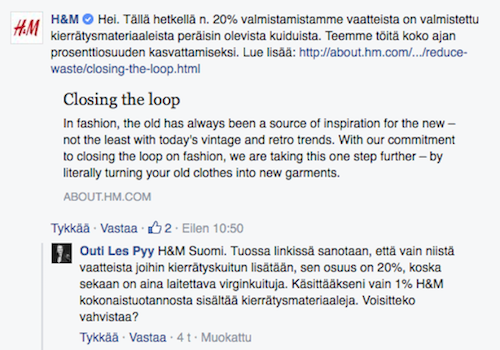
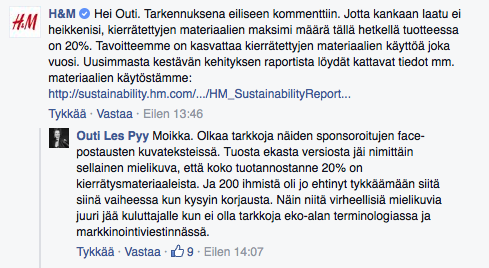
VOUCHER SCEME
None of the eco fashion professionals and articles that I have read, support the clothes collecting campaigns incentive, which is a discount voucher, because they do not see it as a sustainable way to promote recycling. It is confirmed by business professionals who call it a brilliant way to add recycling in your business concept and still make a profit. Kyle Stock wrote a nice piece about it to Bloomberg in 2013. “For every bag of clothes (regardless of brand), the Swedish retailer gives a small discount. On its corporate website, H&M says it will offer £5 ($7.70) off a purchase of at least £30. On its U.S. site, H&M promises a voucher for 15 percent off one item per bag of old knickers and pajamas, with a limit of two vouchers per day. In other words, H&M is not granting discounts of more than 17 percent—and less as shoppers spend more. That’s a commendable amount, but not overly generous for a company that routinely posts a gross profit margin around 60 percent and a net profit margin around 15 percent. H&M also sells the castoff clothes, subsidizing the discount further.” In business terms it is a win-win. The customer gets a good feeling and H&M sells even more.
Orsola de Castro, co-founder of Fashion Revolution, was one eco fashion pro to send H&M a message. “We hope that H&M will scrap their discount voucher in the future so as to not encourage further over- consumption amongst their young customers – that would be a logical next step towards correctly tackling the issue of fashion waste. ”
To give a more sustainable alternative to the discount voucher, I suggest they give you a clothes repair kit or a small book (not a leaflet) on how to take care of your garments better.
To give a more sustainable alternative to the discount voucher, I suggest they give you a clothes repair kit or a small book (not a leaflet) on how to take care of your garments better. These actions would keep the recycling actions on a sustainable side and even help customers take care of their clothes better, so they would not end up in the recycling bins so fast. After all, according to the EU waste hierarchy, the first step is to prevent more waste.
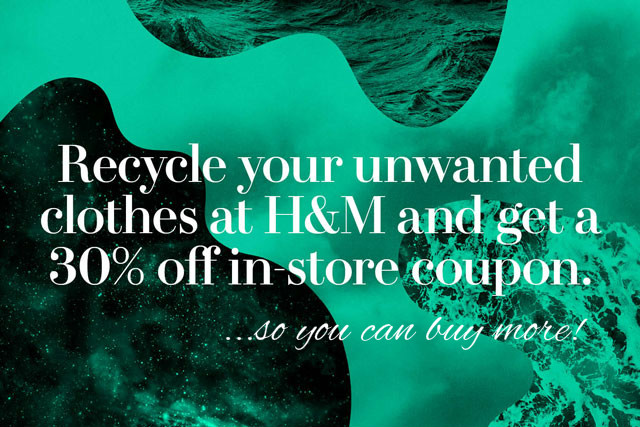
FURTHER READS:
Omat ohjeeni vaatelahjoituksen tekemiseen.
Lisää pohdintaa vaatelahjoituksista, varsinkin 1900-luvun vaatteista.
Tekstiilien uudelleenkäytön ja tekstiilijätteen kierrätyksen tehostaminen Suomessa by Helena Dahlbo, Kristiina Aalto, Hanna Salmenperä, Hanna Eskelinen, Jaana Pennanen, Kirsi Sippola ja Minja Huopalainen (Ympäristöministeriö, 2015).
Fate and Impact of Used Textiles Exports, Phase One Report by David Watson, PlanMiljø David Palm, Ramböll Frode Syversen, Mepex Olav Skogesal, Mepex Jakob Pedersen, PlanMiljø / Nordic Council of Ministers, www.norden.com
GERMAN TEXTILE RECYCLING BENCHMARKING, Case I: CO, Bachelor’s thesis HAMK 2013 by Muhammad Ishfaq
Natural Capital At Risk, by Trucost.
Carbon footprint and energy use of textile recycling techniques (Sweden), Master of Science Thesis by BAHAREH ZAMANI, Department of Chemical and Biological Engineering Chalmers University of Technology, Sweden
Am I a fool to expect more than corporate greenwashing? by
Is H&M misleading customers with all its talk of sustainability? by Mark Bain in Quartz.
Soex Group company presentation / Turku Amk
Vaatejäte roskiksen kautta savuna ilmaan, by Maarit Åström-Kupsanen and Ville Alijoki.
The hidden trade in our second-hand clothes given to charity, by Andrew Brooks, The Guardian.
Is H&M really as ‘green’ as they seem to be? by Vivian Hendriksz, Fashion United.
H&M is using £5 vouchers to become more sustainable. Will it work? by Emily Cronin, The Telegraph
Don’t Let M.I.A. and H&M Fool You Into Thinking Fast Fashion Is Sustainable, by Matt Miller, Esquire Magazine.
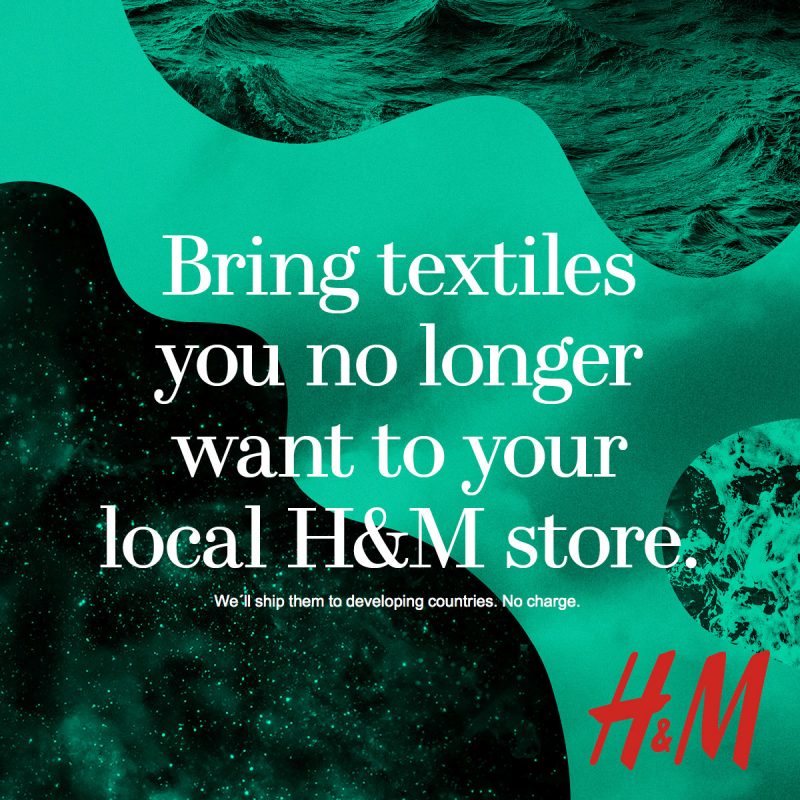
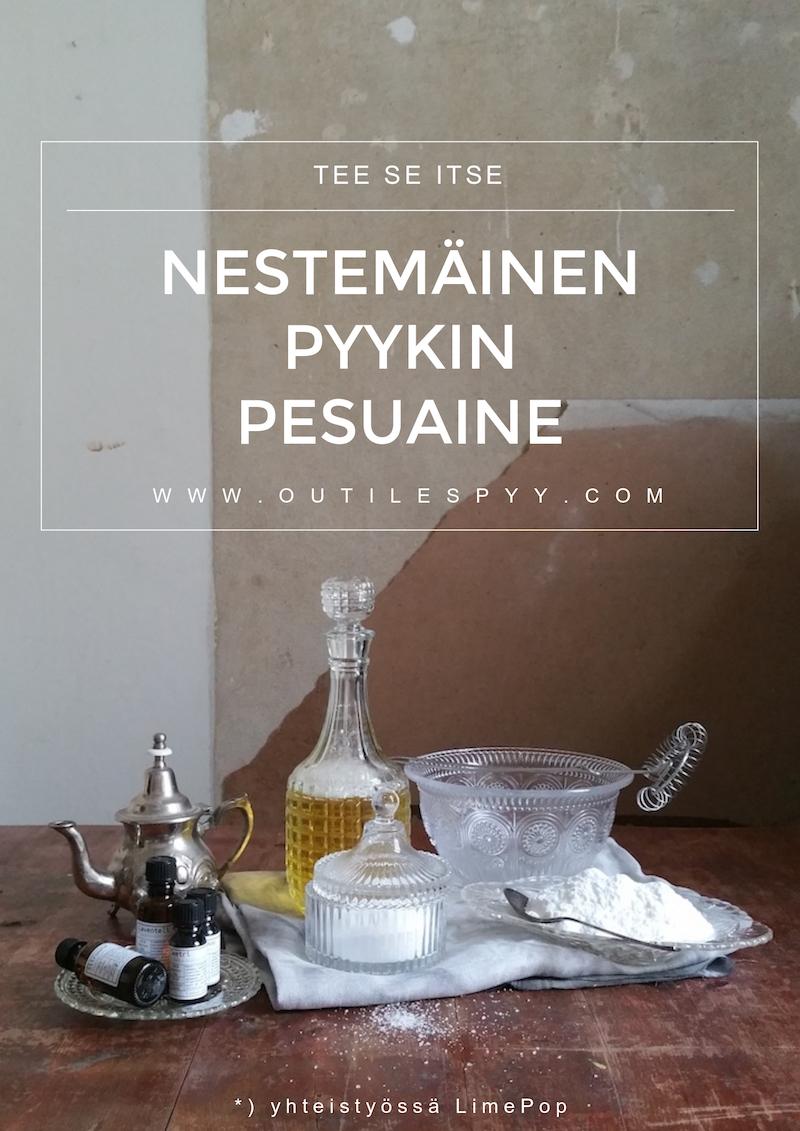
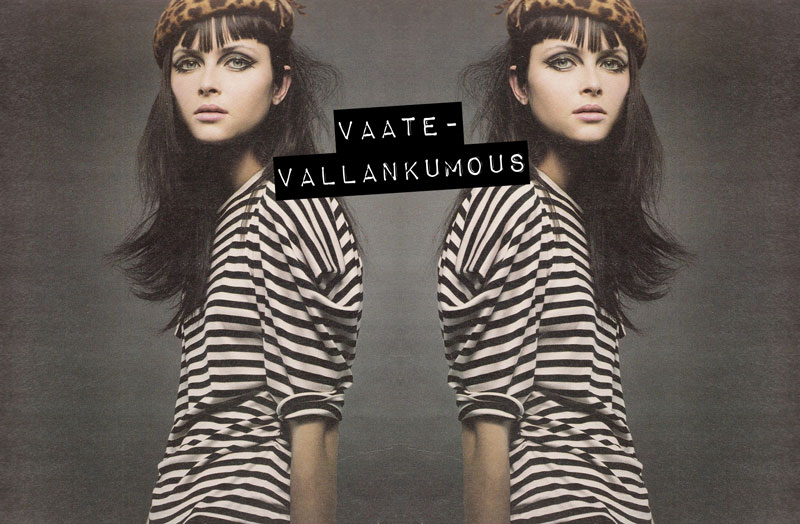


Kiitos tästä selvityksestä!! Olen aiheesta kiinnostunut Vestonomi ja maailman(rakastaja)parantaja, joka haluaa faktoja ja totuutta! Epäluuloni heräsi siinä vaiheessa, kun H & M.n sivuilla infograafi kuvasi, kuinka kohtapuoliin lähes 100% tekstiilimateriaalista kulkee ikuista kehää heidän tuotannossaan…EN nähnyt tätä aivan mahdollisena.
Siksi juurikin kirjoitin tämän. H&M on menossa oikeaan suuntaan, mutta niiden markkinointi ei vastaa todellisuutta.
Itse jäin kirjoitusen jälkeen kahden vaiheille. Ymmärtääkseni H&M vastaanottaa myös puhkikuluneita vaatteita, joita ei voi Suomessa tietääkseni kierrättää mitenkään muuten. Olisiko kokonaisuuden kannalta parempi kuitenkin heittää rikkinäiset vaatteet roskiin kuin kiikuttaa niitä H&M:lle?
Yksinkertaista vastausta kysymykseesi ei ole. Käyttöön kelpaamattomalle tekstiilille vaihtoehtoja on kaksi. Jos haluat lajitella tekstiilin itse ja olet varma siitä ettei ko. tekstiilille ole edes käyttöä kuituna, taloyhtiön sekajäätteen mukana se menee suoraan jätteenpolttolaitokseen Suomessa. Näin se käsitellään paikallisesti, eikä logistiikasta tule päästöjä paljoa. Jos taas haluat, että tekstiililajittelu tekee valinnan ja arvioinnin ko. vaatteen jatkokäsittelystä puolestasi, sen voi viedä H&M-myymälään ja I:CO lajittelee sen Saksassa. Se voi joko päätyä kuidutukseen, tukkumyyntiin tai energianpolttoon, riippuen siitä mitä kuitua se on ja missä kunnossa se on. Tästä kuitenkin aiheutuu jonkin verran päästöjä, koska ainakin logistiikka Saksaan. Tekstiilin energiapoltosta saatava energiamäärä ei käsittääkseni ole erityisen merkittävä. Se ei siis ole “tosi hyvää” polttoainetta laitoksille. Päätit sitten tehdä mitä vain, niin pääasia on ettei käyttöön kelpaamatonta tekstiiliä lahjoiteta hyväntekeväisyysjärjestöille. Käyttöön kelpaamaton tekstiili on siis täysin pilalla, likaista, loppuunkulutettu tai tahraista. Pikkuvikaisia voi lahjoittaa myös hyväntekeväisyysjärjestöille, mutta ne olisi kyllä hyvä vähintää pestä/puhdistaa/tuulettaa, mutta ainakin huoltaa kuntoon. Toivottavasti selvensi edes vähän :)
Tässä tänä vuonna julkaistu sivusto, jossa käsitellään vaatteiden eettisyyttä, brändien läpinäkyvyyttä ja muutakin. http://projectjust.com/ Mukana on myös blogi vaatteiden kierrätyksestä, lahjoittamisesta hyväntekeväisyyteen:”Down the donations rabbithole”. Yksinkertaisia vastauksia ei todellakaan ole.
[…] sekä tehdä vastuullisempia valintoja. Tästä tulossa kirjoitusta piakkoin. Täältä löydät Outi LesPyyn todella kattavan kirjoituksen aiheesta. Palaan asiaan myöhemmin hieman […]
[…] vaatteista ja kodin tekstiileistä menee oikeasti kierrätykseen. Esimerkkeinä tästä ovat mm. i:CON tekemä vaatekeräys H&M-myymälöissä, Stockmannin yhteistyö Emmy.fi:n kanssa ja Sokoksen vaatekeräys. Nämä palvelut toimittavat […]
[…] Silti moni vaatekeräyskampanja antaa ymmärtää, että suurin osa vanhoista vaatteistamme olisi kierrätettäväksi sopivia. Tai, että niistä vanhoista käytetyistä lumpputunikoista ja rikkinäisistä farkuista, tai likaisista sukistasi saadaan tehtyä uutta kuitua (lankaa ja kangasta) tuosta vaan. Mainoskampanjoissa vilahtelee sloganeita kuten “95% vaatteista voitaisiin kierrättää.” ja muuta epämääräistä, mikä saa kuluttajan kantamaan vanhat lumppunsa takaisin kauppojen vaatekeräyksiin alekuponkeja vastaan. […]
[…] H&M vaatekeräyksessä on puolensa ja puolensa. 2016 […]
Unfortunately I have a closet full of work uniforms that can only be recycled
[…] varmaankin lukeneet viime vuosien aikana blogistani ja uutisista artikkeleita, missä puhutaan suomalaisten käytetyn tekstiilin dumppaamisesta […]
[…] tekstiilikeräys on mainoksen mukaan täydellisen helppo ratkaisu. Minä olen asiasta hieman eri mieltä. Julkaistu […]